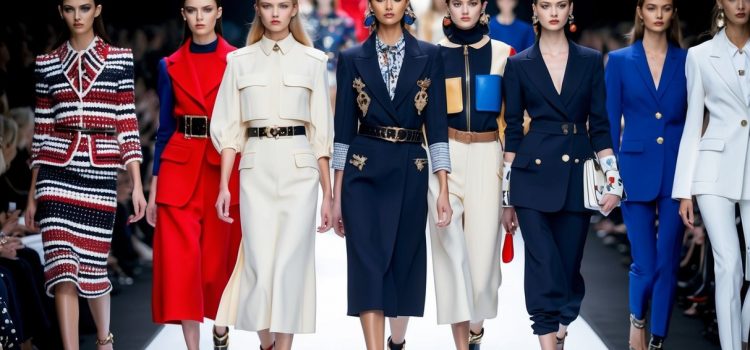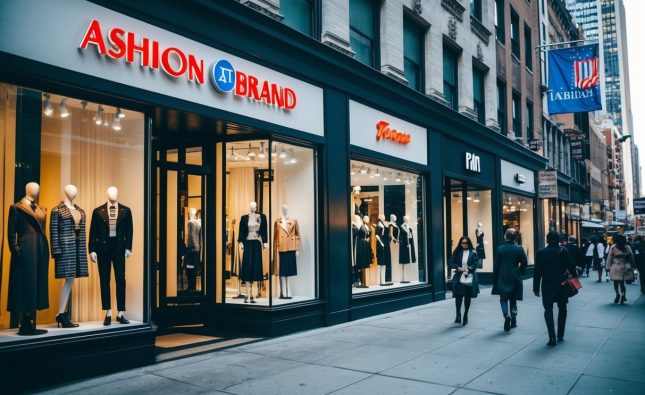
European and American fashion brands represent distinct styles and philosophies, often reflecting their cultural origins. European brands tend to prioritize elegance and craftsmanship, while American brands often emphasize practicality and casualness. This divergence is evident in the design aesthetics, marketing strategies, and consumer engagement of the two regions.

European fashion houses are known for their haute couture and luxury offerings, often setting trends that influence the global market. They focus heavily on unique designs and high-quality materials, catering to a clientele seeking exclusivity. In contrast, American brands typically embrace a more laid-back, sporty vibe, appealing to a broader audience that values comfort and versatility.
Understanding these differences can guide consumers in choosing brands that align with their personal style. From Parisian chic to New York casual, each fashion scene offers unique contributions to the industry’s evolution. As fashion continues to globalize, the lines between these regional styles may blur, but their foundational principles remain distinct.
Historical Evolution of Styles
Fashion has continually evolved, reflecting cultural changes and social contexts. The distinctions between European and American fashion have deep historical roots that shaped their respective identities.
European Sartorial Roots
European fashion boasts centuries of refinement, deeply influenced by royal courts and aristocracy. The 17th and 18th centuries marked the rise of elaborate styles, with France at the forefront. Designers like Louis XIV patronized craftsmanship, establishing Paris as a fashion capital.
The Industrial Revolution propelled innovation, making luxury accessible. Haute couture emerged in the mid-19th century, with figures like Charles Frederick Worth pioneering designer labels. Italian craftsmanship also gained prominence, particularly in tailoring and accessories, establishing brands like Gucci and Prada in the 20th century.
American Fashion Emergence
In contrast, American fashion evolved primarily from practicality and utility. The late 19th and early 20th centuries saw American designers like Claire McCardell promoting ready-to-wear garments. This shift emphasized comfort and functionality, mirroring the country’s ethos.
The post-World War II era heralded a new phase, as Americans embraced casual styles. Brands such as Ralph Lauren and Calvin Klein emerged, reflecting a blend of street style and luxury. This evolution led to the rise of American sportswear, with an emphasis on versatile, everyday clothing that resonated globally.
The rise of technology and mass production further transformed the landscape, allowing access to a broader audience.
Influence and Inspiration
The interplay between European and American fashion is marked by profound influences and shifting cultural inspirations. The fashion landscapes in both regions reflect unique yet interconnected pathways that shape trends and tastes.
Cross-Atlantic Influences
European fashion brands often draw inspiration from American street style. Brands like Calvin Klein and Ralph Lauren have incorporated elements of classic American casual wear into collections that resonate globally. This cross-pollination enhances the appeal of both styles.
Conversely, European luxury brands, such as Gucci and Prada, influence American designers with high-quality fabrics and tailored silhouettes. This creates a dialogue that blends sophistication with casual flair, leading to innovative designs.
Fashion weeks in both regions serve as a platform for these exchanges, showcasing the convergence of aesthetics that defines contemporary style.
Impact of Cultural Shifts
Cultural movements play a significant role in shaping fashion. The rise of social media has democratized fashion, allowing trends to spread rapidly between both continents. Influencers from both Europe and America now have a direct hand in dictating what is stylish.
Moreover, issues like sustainability and body positivity are affecting brand philosophies on both sides. European brands like Stella McCartney emphasize eco-conscious designs, while American brands adopt similar values to remain relevant.
This shift towards social responsibility creates an evolving narrative in fashion that transcends geographical boundaries.
Brand Identity and Marketing

Brand identity and marketing strategies differ significantly between European and American fashion brands. European brands often emphasize heritage and craftsmanship, while American brands focus on lifestyle and accessibility.
European Luxury Heritage
European luxury brands frequently rely on a rich history and established craftsmanship to build their identity. Brands like Chanel, Gucci, and Louis Vuitton leverage their storied pasts to evoke a sense of exclusivity.
These companies often highlight the skilled artisans behind their products, showcasing meticulous attention to detail in both design and manufacturing.
Marketing campaigns typically use high-quality visuals, emphasizing elegance and sophistication. Events such as fashion weeks in Paris and Milan play a crucial role in reinforcing this image. Collaborations with renowned artists and designers further enhance prestige.
American Branding Strategies
American fashion brands tend to adopt a more casual and approachable identity. Companies such as Ralph Lauren and Levi’s focus on creating a lifestyle around their products. They build brand loyalty through storytelling that resonates with everyday experiences.
Marketing often employs diversity and inclusivity, appealing to a broad audience. Social media plays a pivotal role, with brands utilizing platforms like Instagram and TikTok for direct engagement.
User-generated content and influencer partnerships are common strategies. This approach fosters community and connection, distinguishing American brands in a competitive landscape.
Consumer Perception and Demand
Consumer perception significantly influences the demand for fashion brands, with important distinctions between European and American markets. The varying cultural values and brand narratives shape how consumers view quality, design, and trends.
Perception of Quality and Craftsmanship
European brands are often associated with high quality and craftsmanship. They emphasize artisanal techniques and heritage, creating a perception of luxury. For instance, Italian fashion houses like Gucci and Prada showcase meticulous tailoring and premium materials.
In contrast, American brands frequently focus on practicality and innovation. While brands like Ralph Lauren and Calvin Klein ensure quality, their marketing often highlights accessibility and lifestyle over traditional craftsmanship. This difference in perception affects consumer loyalty and willingness to invest in higher-priced items.
Trends in Consumer Buying Behavior
Consumer buying behaviors are evolving, with sustainability and ethical practices gaining importance. European brands have made strides in sustainable fashion, impacting consumer choices. Brands such as Stella McCartney lead the charge in eco-friendly practices, appealing to environmentally conscious shoppers.
American brands are also adapting, though the pace varies. Many are incorporating sustainable materials and promoting transparency in their supply chains. As consumers become more informed, their buying decisions reflect their values, creating a shift towards brands that align with ethical standards.












